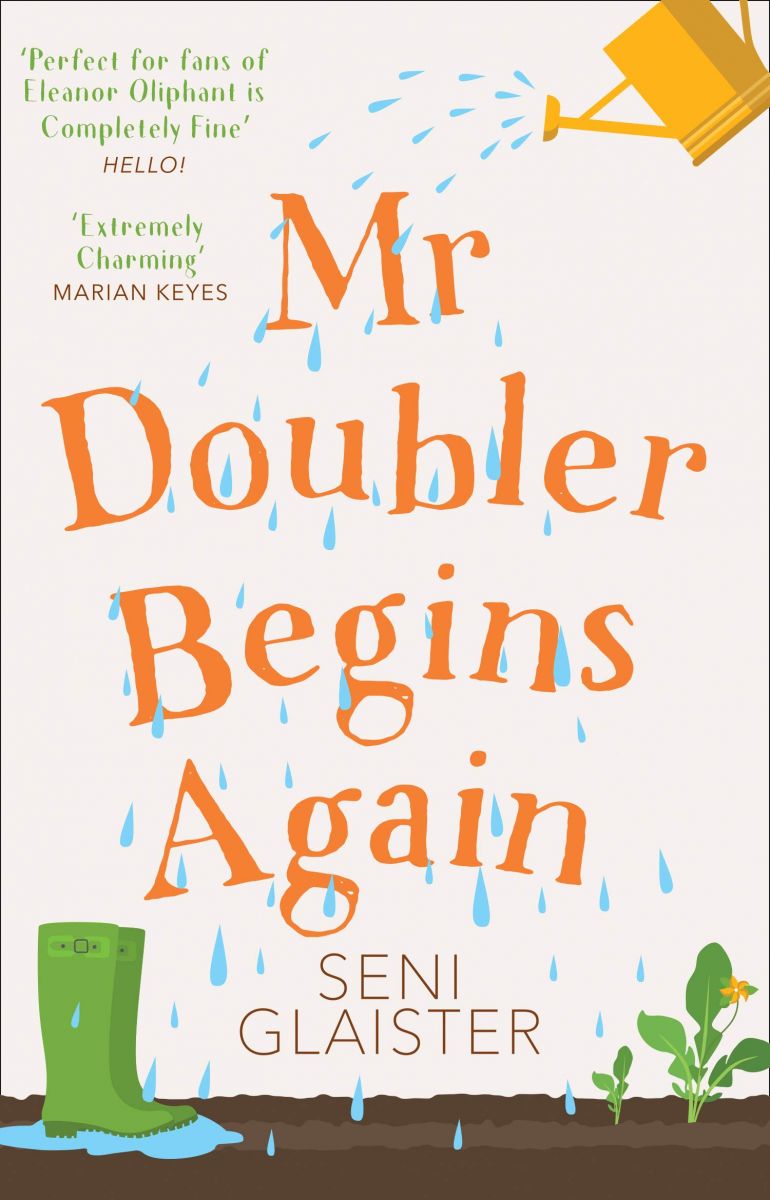You are viewing your 1 free article this month. Login to read more articles.
People power
The legacy of the firm which took books to readers across the country, and was shuttered late last year, is assessed by its co-founder Seni Glaister.
The visceral pain I felt when I heard the news of The Book People’s collapse days before Christmas was quickly replaced by weary exasperation as I (foolishly) went on to read the comments. I would expect a little schadenfreude from some independent booksellers, but I was genuinely shocked to hear a handful of authors expressing relief that the 30-year-old business had gone into administration.
The Book People was founded in 1988 in an era of economic depression, before the demise of the Net Book Agreement, before the internet, before Amazon, before supermarket book ranges, and long before Black Friday became a blight on the retail landscape. It was also born into a very different consumer culture, one in which book clubs flourished and 21 days was a reasonable period to wait for a delivery. Understandably, as The Book People began to establish a foothold during this age of unprecedented change, the company encountered objectors from every sector. Over the next decade or so, the business painstakingly overcame those objections by forging strong relationships across the industry, and by demonstrably doing more good than bad.

The single biggest debate centred on whether The Book People’s sales were incremental or cannibalising, but there was always plenty of data to prove it was the former. This and many incorrect myths surrounding The Book People remain unchallenged, but to hear an author complain about the low royalties received might make you think those deals were unwanted, unapproved or impossible to avoid. In reality, it was never that easy to get a book selected by The Book People as the slots were fiercely fought for and could only be won on merit. The buyers (I was one of them) were shown tens of thousands of titles every year but of these only a very small range could be chosen. Typically, we were looking for fewer than 100 titles a year, which really doesn’t begin to make a dent in the 180,000-plus books published each year in the UK alone.
 Each week, The Book People’s distributors would physically place samples of books in 30,000 offices, schools and factories, putting copies into the hands of hundreds of thousands of customers during their lunch breaks. The Book People believed (and I still do) that books should be encountered in as many different places as possible. Most people don’t go into bookshops; most people do go to work. So we put the books wherever people could be found, and by hand-picking the list we ensured the books were of a quality and price that created new book buyers and inspired new readers. The Book People was, in today’s language, seeding disruptive pop-up bookshops—and doing so on a massive scale. The loss of this market, one that introduced a hand-picked list of books to non-traditional book-buyers, should be mourned by publishers, authors, schools and readers alike.
Each week, The Book People’s distributors would physically place samples of books in 30,000 offices, schools and factories, putting copies into the hands of hundreds of thousands of customers during their lunch breaks. The Book People believed (and I still do) that books should be encountered in as many different places as possible. Most people don’t go into bookshops; most people do go to work. So we put the books wherever people could be found, and by hand-picking the list we ensured the books were of a quality and price that created new book buyers and inspired new readers. The Book People was, in today’s language, seeding disruptive pop-up bookshops—and doing so on a massive scale. The loss of this market, one that introduced a hand-picked list of books to non-traditional book-buyers, should be mourned by publishers, authors, schools and readers alike.
It’s important to remember, also, that The Book People never did a deal that didn’t meet the approval of a number of people, including an agent and, crucially, the author. Each deal was negotiated afresh, and the terms were always based on a net receipt royalty, regardless of sales. Typically, the royalty was a lower percentage than the standard retailer royalty but it was payable on the entire order placed, which could be very big indeed. And with no returns or deductions, the royalty was effectively a bankable, incremental income. For a début author looking to augment their income and gain exposure, or for an author with a backlist that just might not get the shelf space in traditional retail, a deal with The Book People could make a real difference.
An irresistible offer
The deals were complex, the buyers were demanding, and yet the publishers kept coming, kept unloading cases full of dummies from the boots of their cars, kept parading mocked-up jackets, kept fighting for those slots. Sometimes, they would even wheel out the author to seal the deal.
So why did publishers try so hard to sell to The Book People at the risk of upsetting the chains and independents, their most valued customers? I think the answer was twofold.
The commercials were compelling. The Book People made its selection at the very earliest stage in the lifetime of the book, thereby underpinning a print run. For non-fiction it might be pre-jacket, pre-manuscript, and certainly before any sales history or established traction. Adult fiction had to fit a very narrow criteria and each novel was read and personally endorsed and recommended. The books were bought firm-sale, in large quantities, and there was some skill to this. The Book People fielded the same buying team for 27 years: we knew what worked in our market and, crucially, we knew why it worked, so we were able to replicate success. (But when we did mess up, which of course we did, it was at our financial risk.)
Hindsight makes it easy to look at the many household names sold in vast quantity and assume The Book People had its success handed to it on a plate. But the names were rarely big at the time of acquisition. You might, therefore, apply the flattering argument that we were particularly successful at predicting bestsellers, or you could apply the much more likely argument that The Book People played a part in establishing those books as bestsellers.
Non-brand authors need readers to generate word-of-mouth but without word-of-mouth it’s very hard to get readers. Many campaigns—as an author, I’m about to embark on my third—hope to get at least 2,000 early reading copies into the hands of bloggers, influencers, buyers and anyone else who will help drive pre-sales and buzz on publication. Those proofs are given away free, and the cost of both print and distribution takes quite a chunk out of a publisher’s marketing campaign. If you look at the economics of this for the publisher, you can see why a 5,000 hardback run-on of a début novel was pretty irresistible. The additional volume on the hardback run helps to lower the print price significantly. But perhaps more importantly, it will generate grassroots, word-of-mouth chatter among an authentic, non-partisan audience and deliver a firm sale/net receipt royalty back to the author, a royalty that might be small but is absent entirely with a free proof campaign.
Making an impact
It’s a few years since I left the business, and I continue to meet many people for whom The Book People made a massive difference. But the truth is its impact was wider than most people realise.
The Book People worked hand in hand with schools, rewarding them with free books for their libraries. It stepped in to help support a major literary prize without attaching its name to the funding, buying the prize time to find a permanent sponsor. It built a children’s presence at Hay Festival and supported a hugely popular children’s programme at the Southbank Centre. It raised a vast amount of money for charity. It administered the unglamorous logistics of the Bookstart Programme, delivering books to every school in the country while ensuring that the hard-to-reach children got their free books too. And it collaborated across publishing on a number of hyper-local and nationwide initiatives, its only criteria being that reading for pleasure was a core tenet of any project it undertook.
When I think of all the ways The Book People added value to an industry I love, I think it was proudest of making books accessible and affordable in those areas where resources were most scarce. I’m confident those sales were incremental and, as such, irreplaceable. There won’t be a bumper upsurge of royalties for those few authors glad to see the back of them. The books simply won’t be printed, they won’t be sold, and they won’t find their way into the hands of new readers. And for that reason alone, I think The Book People mattered.
 Seni Glaister is the co-founder of The Book People. She stepped down as c.e.o. in 2015. Her novel Mr Doubler Begins Again was published in August 2019 by HQ (£8.99, 9780008285012). It is her second novel, following her début The Museum of Things Left Behind (Fourth Estate, 2016). Glaister’s third novel, Growing Season (HQ), is scheduled for publication in August 2020.
Seni Glaister is the co-founder of The Book People. She stepped down as c.e.o. in 2015. Her novel Mr Doubler Begins Again was published in August 2019 by HQ (£8.99, 9780008285012). It is her second novel, following her début The Museum of Things Left Behind (Fourth Estate, 2016). Glaister’s third novel, Growing Season (HQ), is scheduled for publication in August 2020.















